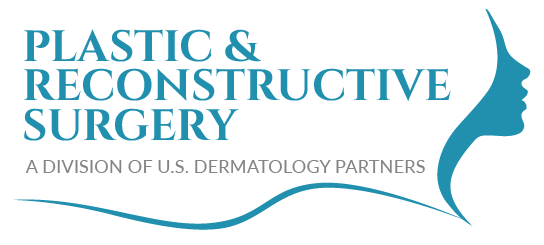Selective Myectomy
For those who struggle with synkinesis (unwanted muscle contractions) or facial muscle spasms, finding a solution to restore their natural facial appearance and movements can be a real struggle. Many of the most invasive surgical options are only minimally effective. Selective myectomy offers improved facial balance and control to manage synkinesis and some unwanted or involuntary facial muscle movements. On this page, you can learn more about selective myectomy, how it works, the benefits, and what to expect following treatment. The knowledgeable professionals at Plastic & Reconstructive Surgery – a division of U.S. Dermatology Partners are also here to help if you have questions. Simply reach out to schedule a consultation with one of our knowledgeable professionals.
What Is Selective Myectomy?
The surgical term myectomy refers to the act of severing muscles. Selective myectomy involves cutting facial muscles to alleviate pressure that causes muscle tightness or involuntary facial movements. Depending on the individual’s presentation with synkinesis, a muscle may be severed on the healthy side, the side experiencing muscle tension, or both. The goal is to alleviate unnecessary strain that leads to facial asymmetry by releasing tensed muscles. In addition to improving the appearance of facial asymmetry caused by synkinesis, selective myectomy may also be performed to reduce or eliminate symptoms like spastic or overly tight muscles in the face that are causing undesired movements or facial expressions, opening and closing the eyes, or making speaking or turning the head more difficult or uncomfortable. Selective myectomy is often performed in conjunction with selective neurectomy. This procedure involves severing nerves that are misfiring, leading to irregular movements.
Benefits of Selective Myectomy
The most obvious benefit of selective myectomy is the relief from facial tightness-related synkinesis and muscle spasms.
Additional benefits include:
- Alleviating muscle tightness
- Relieving pain in the neck and jaw related to muscle tightness
- Giving facial expressions a more balanced appearance
- Creating a symmetrical appearance
- Reducing damage from biting the cheeks or tongue due to muscle tightness
Recovery After Selective Myectomy
Following treatment, most patients can return home the same day. Patients usually need a trusted loved one to drive them home and monitor them for the first day. Selective myectomy patients may notice some swelling in the lips and discomfort that lasts for several days. The surgeon provides specific aftercare instructions, but recovery care usually involves taking antibiotics and using a cleansing and antimicrobial oral rinse to prevent infection during healing. The aftercare diet should be soft foods that are unlikely to irritate the incisions or open stitches. Because the incisions are usually made inside the mouth, there is minimal risk of scarring.
Risks Associated with Selective Myectomy
Most risks associated with selective myectomy are the same that can be expected following any surgical procedure. Infection, excessive bleeding, and damage to deeper tissues and structures are all possible. However, these risks are uncommon, especially for patients who follow the aftercare instructions. Additionally, some people may lose feeling in their lower lip, but this more serious side effect is almost always temporary with normal sensation restored after a few months. Others feel bumps or knots within their surgical incisions. These lumps are usually scar tissue that forms during the healing process. Massaging and stretching the knotted area can reduce the size or eliminate them entirely.

